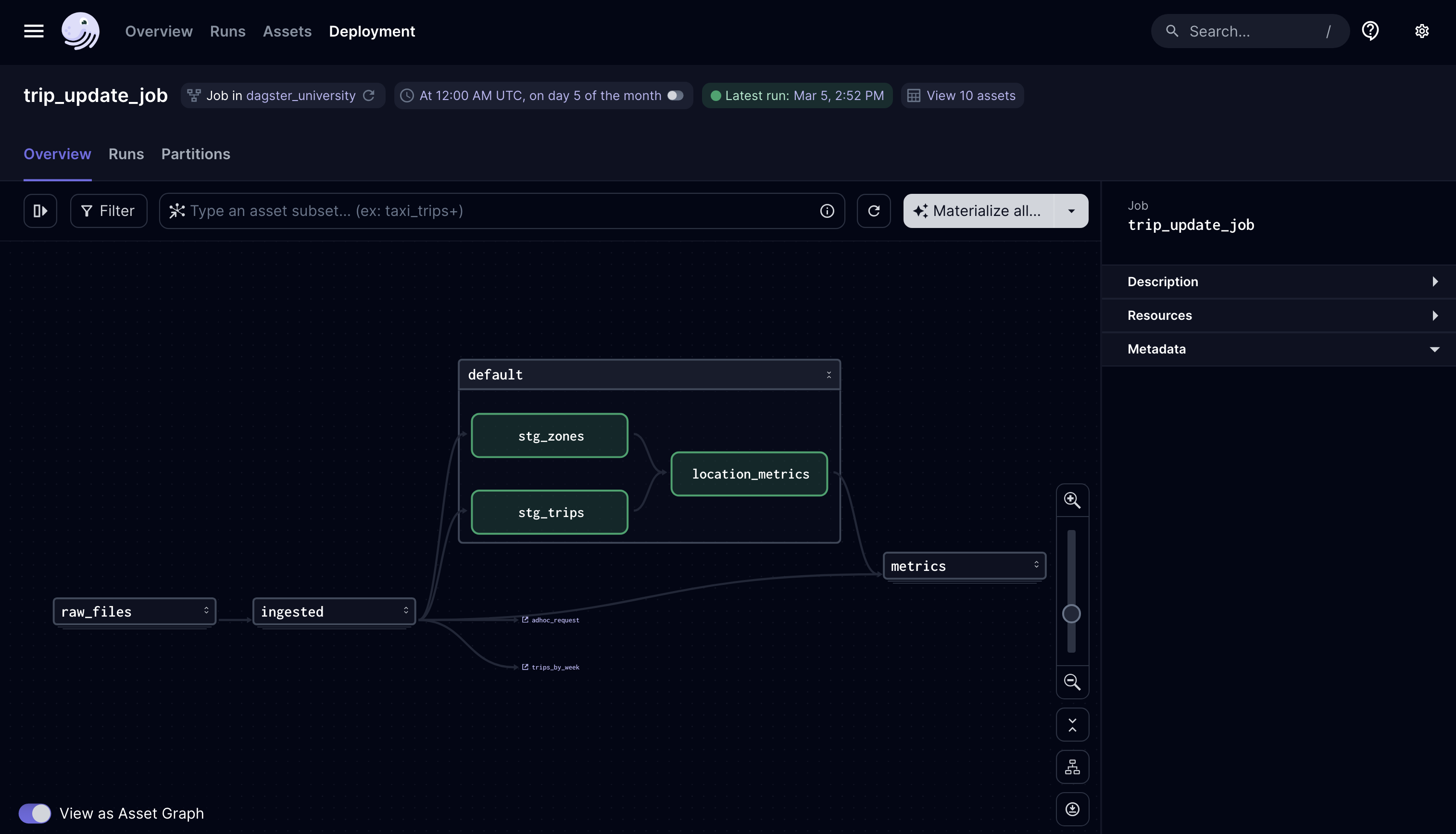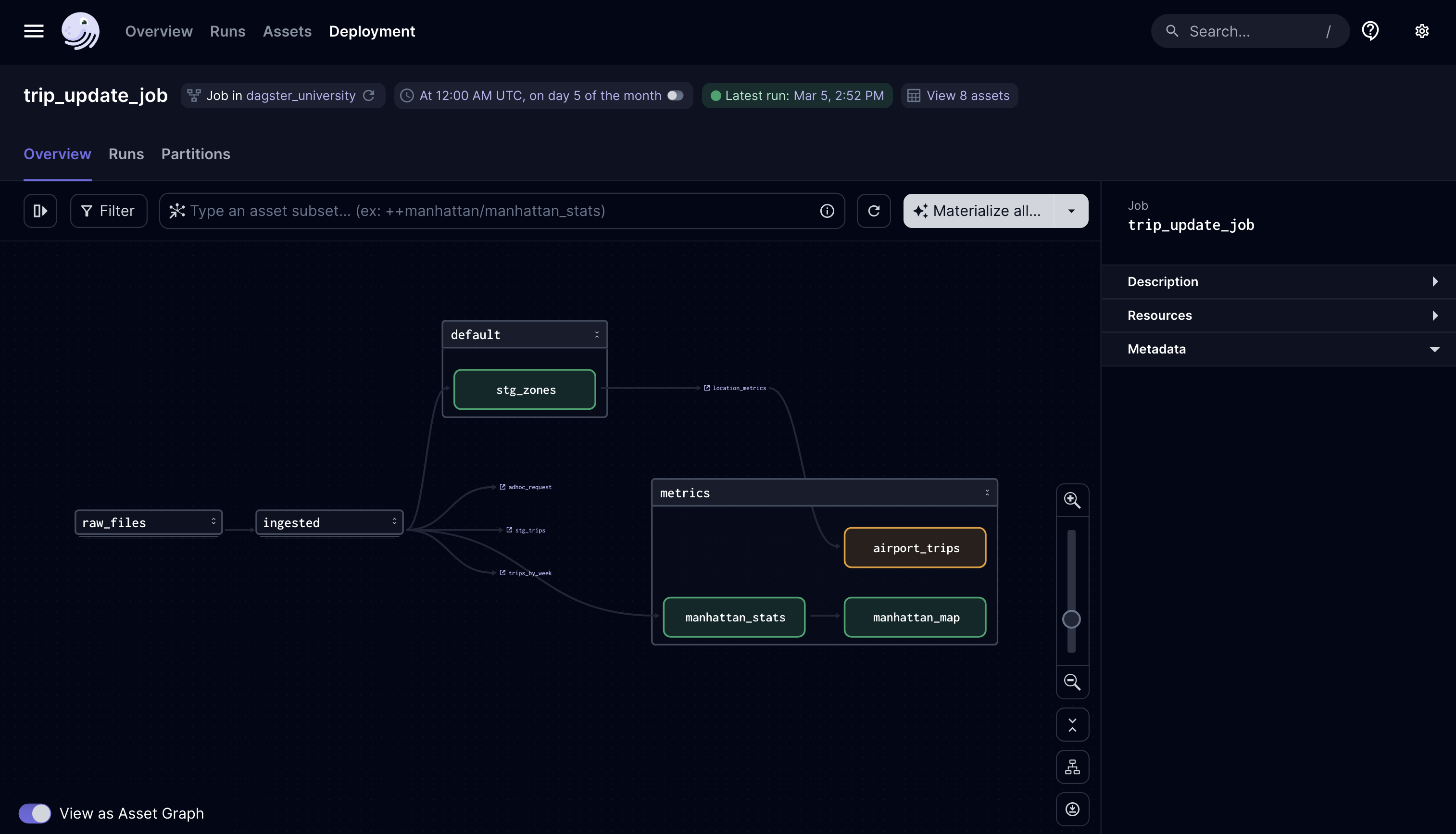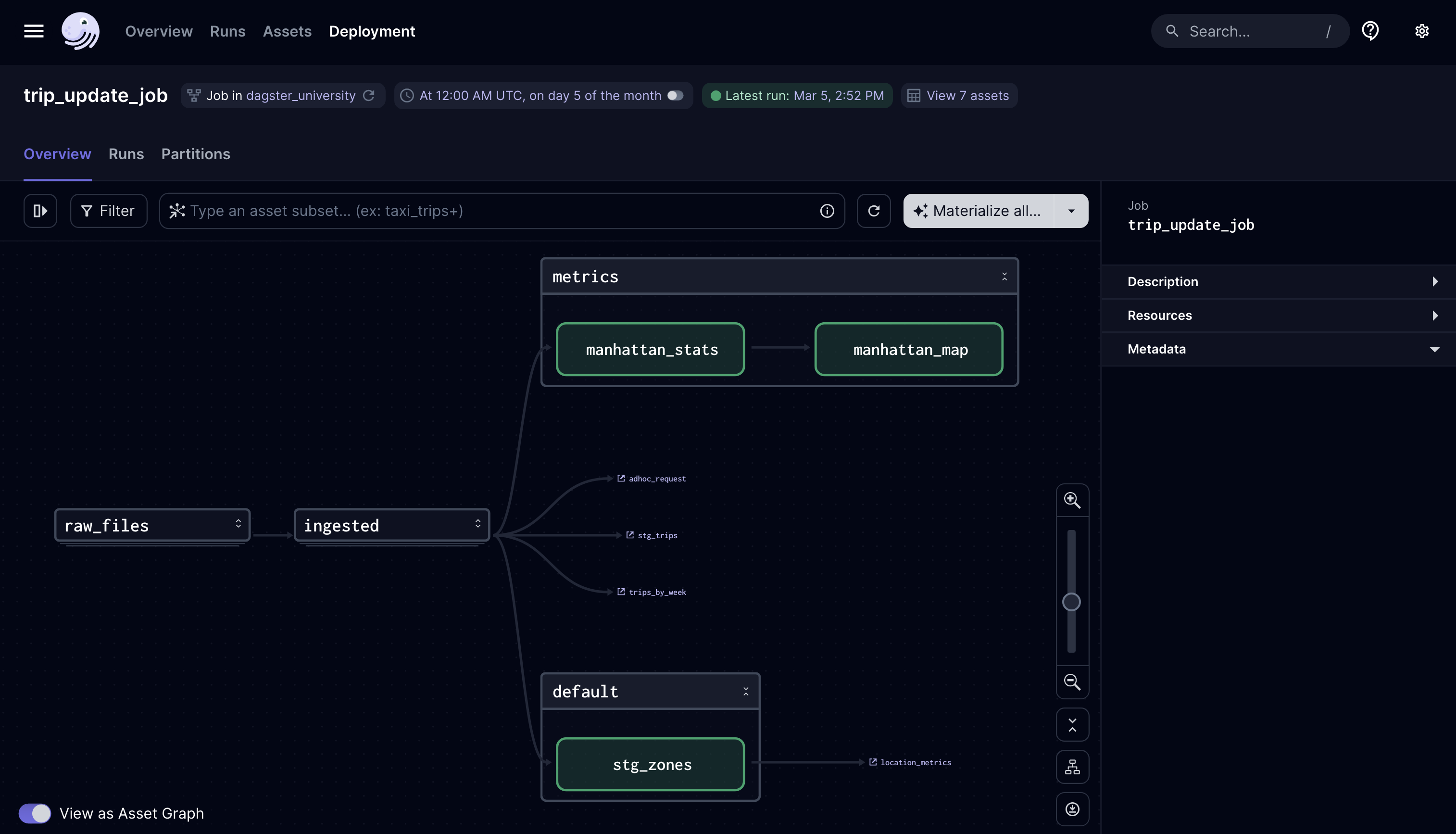Automating dbt models in Dagster
Did you realize that your dbt models have already been scheduled to run on a regular basis because of an existing schedule within this Dagster project?
Check it out in the Dagster UI by clicking Overview in the top navigation bar, then the Jobs tab. Click trip_update_job to check out the job’s details. It looks like the dbt models are already attached to this job!

Pretty cool, right? Let’s check out the code that made this happen. Open the dagster_university/jobs/__init__.py and look at the definition for trip_update_job:
trip_update_job = define_asset_job(
name="trip_update_job",
partitions_def=monthly_partition,
selection=AssetSelection.all() - trips_by_week - adhoc_request
)
The dbt models were included in this job because of the AssetSelection.all() call. This reinforces the idea that once you load your dbt project into your Dagster project, Dagster will recognize and treat all of your dbt models as assets.
Excluding specific dbt models
Treating dbt models as assets is great, but one of the core tenets of Dagster’s dbt integration is respecting how dbt is used, along with meeting dbt users where they are. That’s why there are a few utility methods that should feel familiar to dbt users. Let’s use one of these methods to remove some of our dbt models from this job explicitly.
Pretend that you’re working with an analytics engineer, iterating on the stg_trips model and planning to add new models that depend on it soon. Therefore, you’d like to exclude stg_trips and any new hypothetical dbt models downstream of it until the pipeline stabilizes. The analytics engineer you’re working with is really strong with dbt, but not too familiar with Dagster.
This is where you’d lean on a function like build_dbt_asset_selection. This utility method will help your analytics engineer contribute without needing to know Dagster’s asset selection syntax. It takes two arguments:
- A list of
@dbt_assetsdefinitions to select models from - A string of the selector using dbt’s selection syntax of the models you want to select
The function will return an AssetSelection of the dbt models that match your dbt selector. Let’s put this into practice:
At the top of
jobs/__init__.py, importdbt_analyticsfrom theassets.dbtmodule, along with thebuild_dbt_asset_selectionfunction fromdagster_dbt:from ..assets.dbt import dbt_analytics from dagster_dbt import build_dbt_asset_selectionAfter the other selections, define a new variable called
dbt_trips_selectionand make a call tobuild_dbt_asset_selection. Pass in thedbt_analyticsdefinition and a string that selectsstg_tripsand all dbt models downstream of it:dbt_trips_selection = build_dbt_asset_selection([dbt_analytics], "stg_trips+")Next, update the
selectionargument in thetrip_update_jobto subtract thedbt_trips_selection:trip_update_job = define_asset_job( name="trip_update_job", partitions_def=monthly_partition, selection=AssetSelection.all() - trips_by_week - adhoc_request - dbt_trips_selection )Reload the code location and confirm that the dbt models are not in the
trip_update_jobanymore!
You might notice that the airport_trips asset is still scheduled to run with this job! That’s because the build_dbt_asset_selection function only selects dbt models and not Dagster assets.
If you want to also exclude the new airport_trips asset from this job, modify the dbt_trips_selection to include all downstream assets, too. Because we’re using Dagster’s native functionality to select all downstream assets, we can now drop the + from the dbt selector:
dbt_trips_selection = build_dbt_asset_selection([dbt_analytics], "stg_trips").downstream()
Reload the code location and look at the trip_update_job once more to verify that everything looks right:

💡 Want an even more convenient utility to do this work for you? Consider using the similar
build_schedule_from_dbt_selectionfunction to quickly create a job and schedule for a given dbt selection.